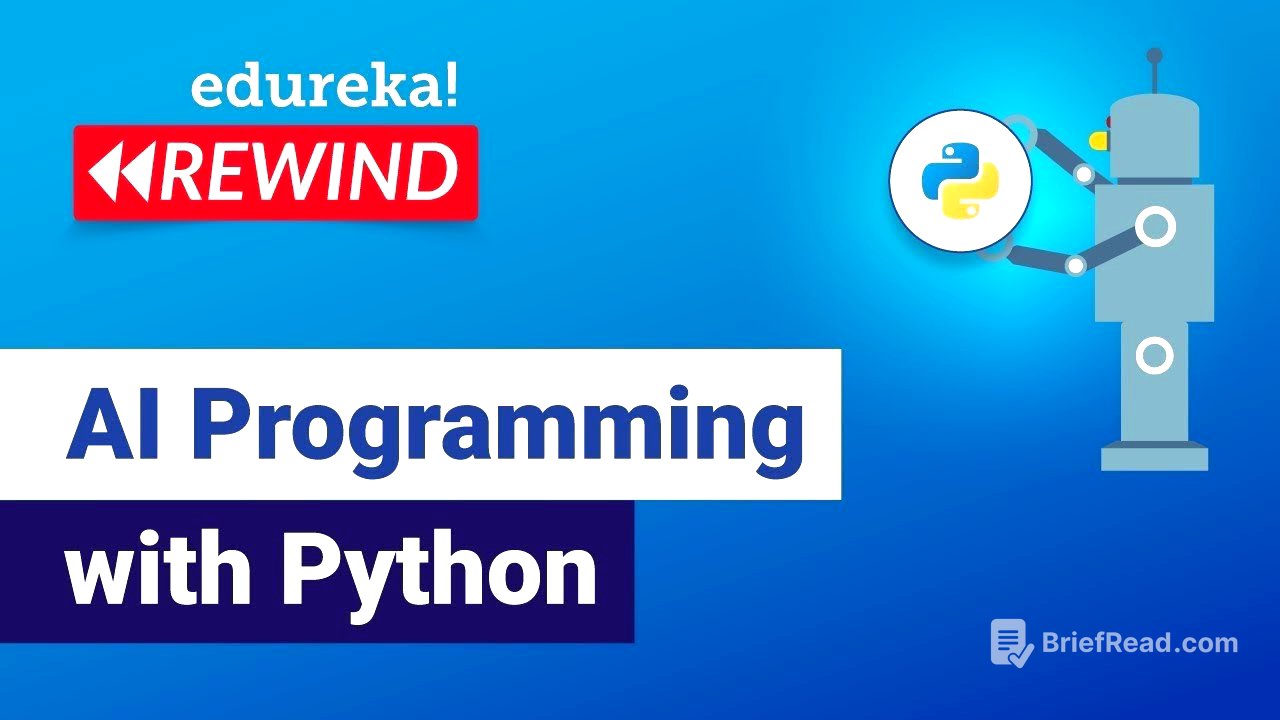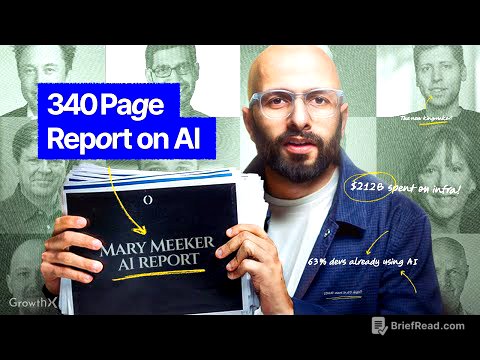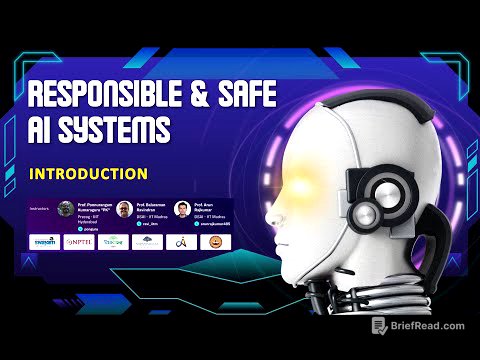TLDR;
Alright, so this session by edureka! gives a walkthrough of Artificial Intelligence (AI) with Python. It covers what AI is, why Python is the go-to language for AI, and dives into some Python packages that are super useful for AI development. Plus, there's a hands-on example to show how data modeling and predictive analysis can be done.
- Introduction to AI and its demand
- Python's role in AI and key packages
- Hands-on data modeling example
Introduction [0:00]
The session kicks off with a quick intro to edureka!'s masterclass community, boasting 30,000 members and a ton of webinars on topics like IoT, big data, and AI/ML. The main topic is artificial intelligence, which, despite being introduced way back in the 1950s, is now a hot topic. AI is all about building smart machines that can do tasks that usually need human intelligence. Think speech recognition, problem-solving, learning, and planning. Examples include Siri, Tesla's autopilot, Netflix recommendations, and Amazon's Echo.
Agenda [5:36]
The agenda for the session includes an introduction to AI, why Python is used for AI, Python features, Python packages, and some hands-on examples. Before diving in, the speaker clarifies the differences between AI, machine learning (ML), and deep learning. AI is about mimicking human behavior in machines. ML is a subset of AI that focuses on machines learning from data. Deep learning, a subset of ML, uses neural networks to solve complex problems.
Demand of AI [7:58]
The demand for AI is driven by the massive amounts of data that need processing. AI, especially with GPUs, can compute this data in fractions of a second. Python, with its libraries like NumPy and Matplotlib, offers better algorithms, reducing the need to write thousands of lines of code. Big data analysis, like that done by telecom companies, also fuels the demand for AI.
What is AI [9:38]
The pillars of AI include machine learning, natural language processing (NLP), deep learning, computer vision, knowledge base, and expert systems. Machine learning involves algorithms that learn from data to improve accuracy over time. NLP enables computers to understand human language, like spell checkers and spam filters. Deep learning uses multi-layered neural networks to simulate the human brain. Computer vision analyzes data to recognize images. Knowledge bases and expert systems help machines learn and make decisions based on accumulated knowledge.
Types of AI [18:57]
There are three types of AI: narrow or weak AI, general or strong AI, and super intelligence. Narrow AI is task-specific, like face verification on iPhones or Google Maps. General AI can perform any intellectual task that a human can, like solving riddles or playing chess. Super intelligence surpasses human intelligence, a concept often seen in movies.
Why python for AI [23:04]
Python is preferred for AI because it requires less code compared to older languages. It has pre-built libraries like NumPy, SciPy, and PyBrain. Python is platform-independent and offers flexibility with object-oriented programming or scripting. Plus, it has a massive community providing support and assistance.
Python Packages for AI [25:49]
The session covers several Python packages for AI, including TensorFlow, scikit-learn, NumPy, and Theano. TensorFlow, developed by Google, is used for machine learning algorithms and deep learning. Scikit-learn is used for unsupervised learning, algorithms, and cross-validation. NumPy is used for scientific and mathematical data processing. Theano is used for evaluating mathematical operations efficiently. Other libraries mentioned include Keras and NLTK.
The session then moves into a hands-on example using Anaconda and Jupyter Lab, demonstrating how to train a model to map images to labels using the MNIST database.









